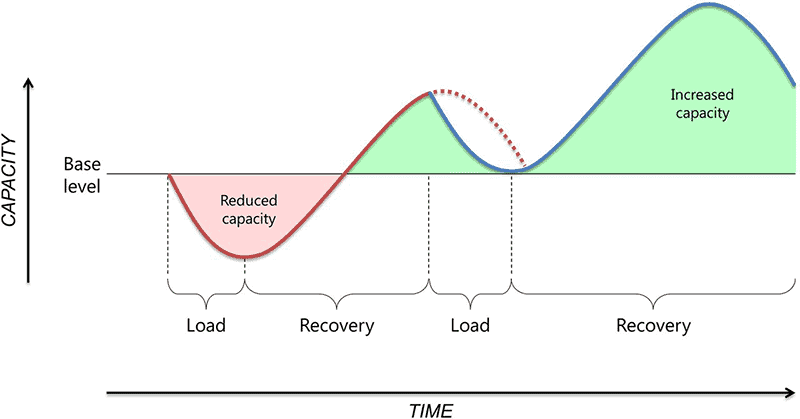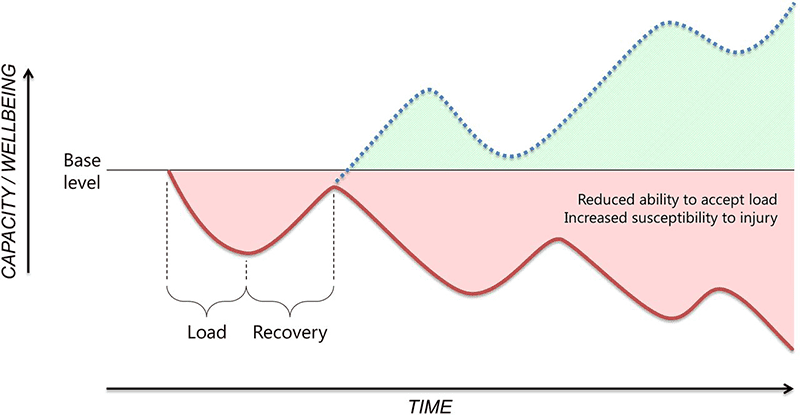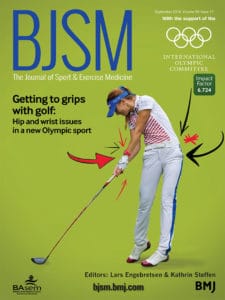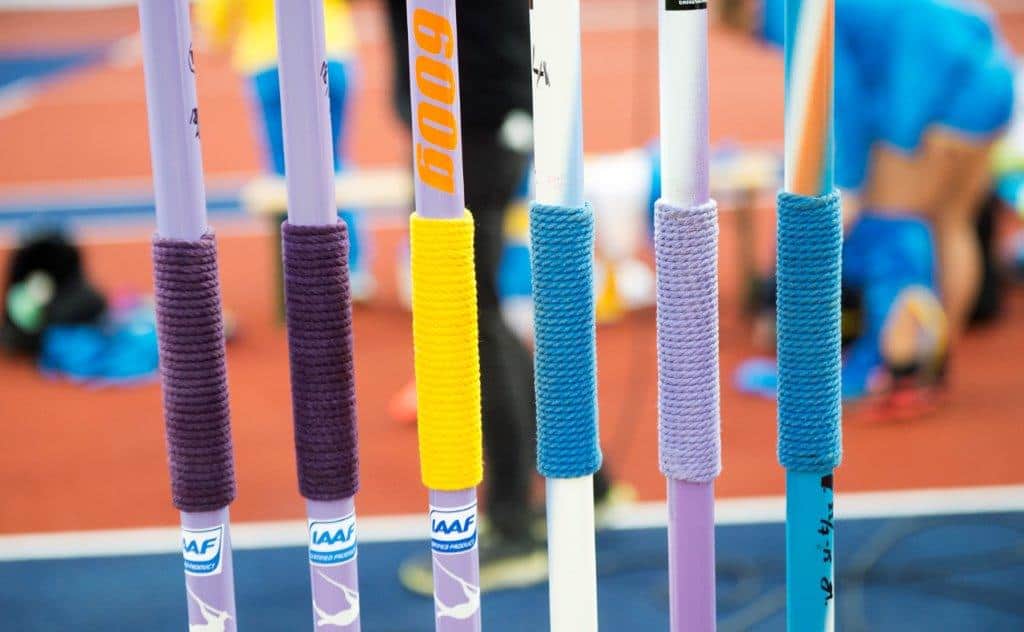Knowledge of sports science and training planning is important for us to achieve continued, long-term development and therefore these subjects make up a large part of athletics training education. On this website we will merely touch the surface of these subjects, and refer the interested individual to athletics coaching courses and the book “Friidrottens allmänna träningslära” (Swedish) if they wish to develop greater knowledge.
Science of Exercise
“Friidrottens allmänna träningslära”(Swedish) provides a useful source of basic knowledge about training which can help you develop an improved understanding of the training process and its planning. The goal of this knowledge is to optimise training and provide guidance for the optimal development of an athlete, based on their individual social, mental and physical characteristics.
It is important to understand, and work towards, long-term development that includes progression through all the various developmental stages shown in the figure below.
A particular challenge of youth sports is that young athletes within a training group can be at completely different phases of their physical maturity (in some cases up to 4-5 years relative difference). On top of this, it is important to note that girls are generally two years ahead of boys in their physical development. As a result, it is important to have a training plan that extends over a longer period of time, and ensure the training is universal, progressive and is designed for individuals who are growing (see also Exercise and Puberty).
Athletics is a complex sport with a great deal of opportunity for variation within training, but too often premature specialisation occurs and important, basic, skills required for long-term development and sustainable athletics are neglected. Current research also indicates that early specialisation (training in only one sport for more than eight months per year) may increase the risk of injury by between 50% and 85% (McGuine 2017).
Planning for training
Exercise planning means “to select training content and progression that enables the body to adapt to performing a specific task” (from Basic training in Athletics). It is important to invest time in training planning to ensure the training has the desired effects and it, at the same time, avoids plateauing or injury.
Training planning is divided into the following steps:
- Step 1: Make a plan for several years. A long-term plan that takes into account the developmental stage that an athlete is in and the type of training that is suitable for that stage.
- Step 2: Make a plan for the season. How do we divide up the training year into preparation and competition periods? How do we periodise the training so that it is well-rounded and varied?
- Step 3: Make a detailed plan. How many sessions per week? What is the exercise and competition load versus recovery time? What types of training and exercise are planned?
The basic principles of the training
Having knowledge of, and working according to, the basic principles of training is important as these are crucial to guiding an athlete in sport. The basic principles underpin how training should be designed during all stages of an athlete’s development. The basic principles of training apply in both the short- (the individual training session or a few weeks) and long-term (the entire development process).
The overarching principle of training theory is to use a process of biological adaptation (the principle of progressive performance enhancement, “supercompensation”). In short, this means that as we increase a training load gradually the body adapts and performance improvement follows. One of the biggest challenges faced by coaches, and athletes, is to learn to understand the connection between exercise load and recovery. It is important to understand that the body is broken down during exercise and that it is during rest that the body is built up. If the recovery is insufficient, the training effect deteriorates and the risk of injury increases. A poor, or even absent, exercise effect also occurs if the training load is too low or the rest is too much.

Figure 1. Y-axis “Capacity” can be interpreted as the individual athlete’s “performance ability” and the X-axis shows time, this could be a week or a longer period of time. The Y-axis shows that during exercise (load) the body is broken down and that after sufficient rest (recovery) the body’s tissues are rebuilt. Recovery can entail several different elements, in youth sports sleep and diet are the most important, but it is also important that the growing feet and knees, for example, have “recovery” from similar, repetitive loads.

Figure 2. On the Y axis, the athlete’s performance capability is associated with their well-being. If recovery becomes insufficient, the tissues (muscles, tendons, bones) become more and more sensitive to loading and the risk of injury increases.

Figures from the British Journal of Sports Medicine: How much is too much? (Part 1) International Olympic Committee Consensus Statement http://bjsm.bmj.com/content/50/17/1030
We have previously written of the risks of specialising too early and sports science advocates varied and diverse training. The figure below (Swedish site) shows a recommendation for the balance between general and specific training at different stages of development (“the principle of diversity”). Note that each stage includes both general and specific training, but the proportion of specific training increases the closer we come to the high-performance stage, whilst general training constitutes a larger part of the training time at the base level.
Athletics is not one sport: It consists of many events, skills and areas that can be worked on!
Question: What happens if you do not recover after training?
When you exercise the body breaks down, which is a natural process. The required recovery time varies depending on the length of training and its intensity, with complete recovery occurring after two to four days. As such, it is important to vary the content of training.
Written by: Dejan Mirkovic and Jenny Jacobsson
References and further reading:
McGuine TA, Post EG, Hetzel SJ, et al. A Prospective Study on the Effect of Sport Specialization on Lower Extremity Injury Rates in High School Athletes. Am J Sports Med. 2017 Oct;45(12):2706-2712.
Svensk Friidrott. Grundträning I Friidrott 10-14 år. SISU idrottsböcker. 2013
Friidrottens Allmänna Träningslära. SISU idrottsböcker. 2017.
Certified physiotherapist. Medical coordinator Swedish Athletics. Associate Professor in Public Health/Health in Sport, with a primary research focus on health in sport.
Trained naprapath, athletics coach youth and adult athletes at both national and international level. Swedish Athletics Association’s responsible for the “Talang 2022 project”.


